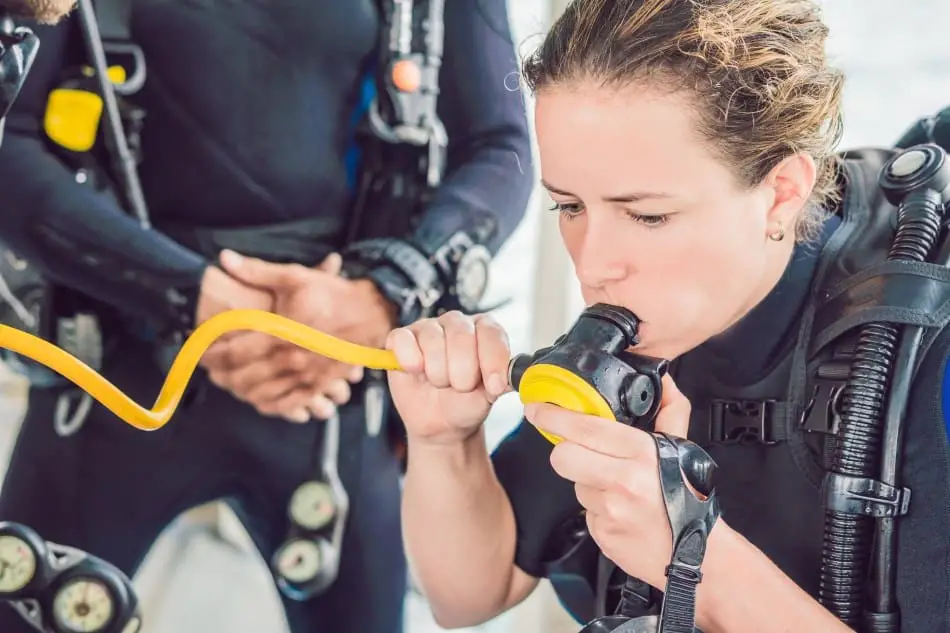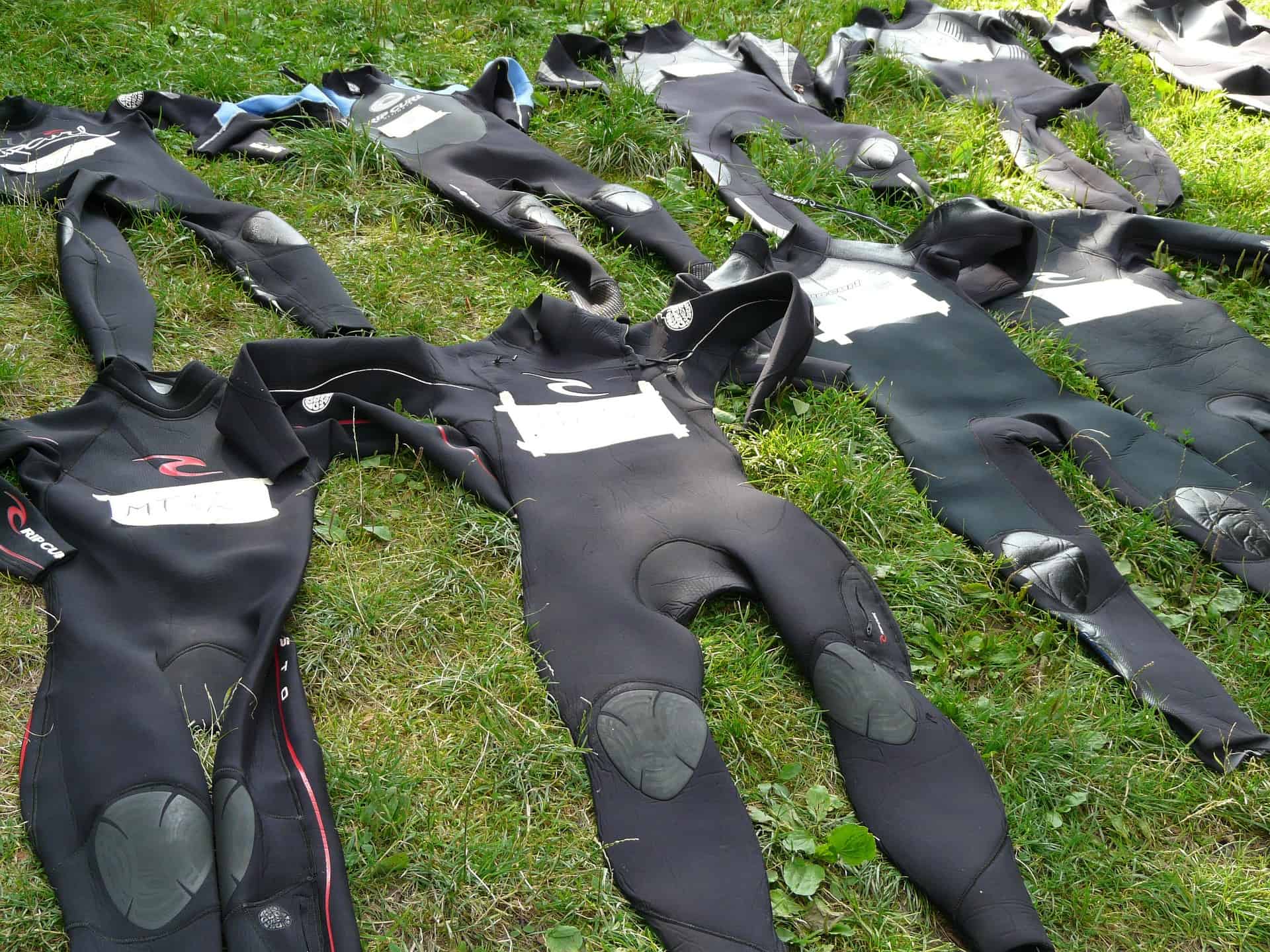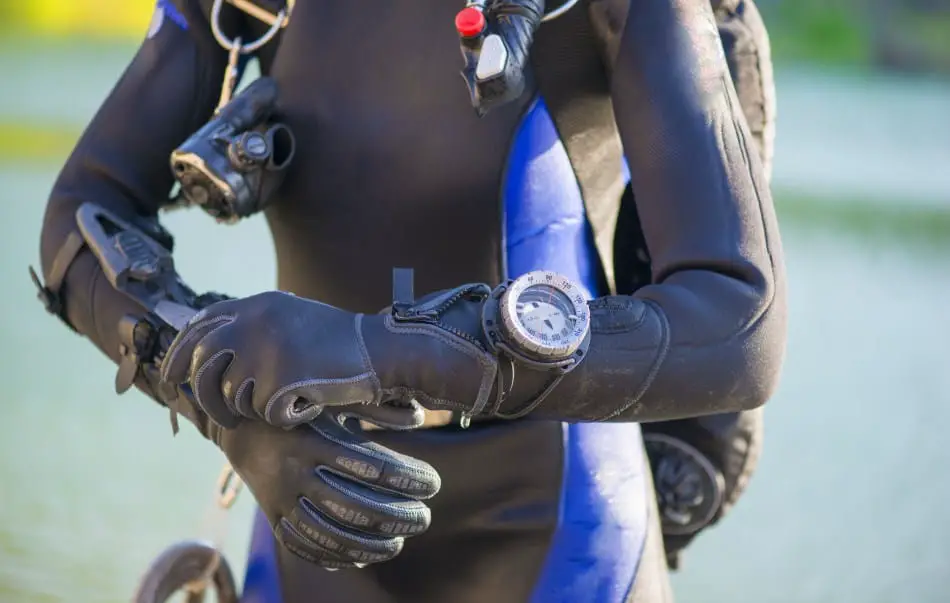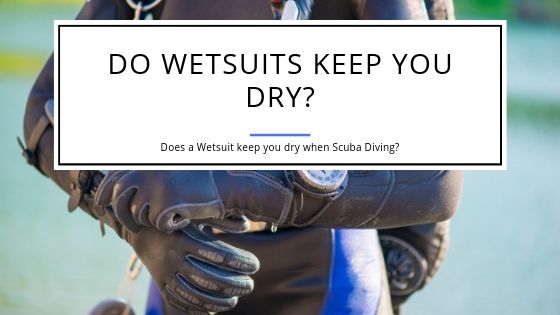Do Wetsuits Keep You Dry?
A wetsuit does exactly what the name suggests- it keeps you wet. The moment you get into the water, the wetsuit soaks it right up. However, wetsuits are designed with minuscule air holes that keep the suit light and give them some buoyancy.
Do Wetsuits keep you dry? No, they don’t. However, they do keep you warm even in colder water. There’s a thin layer of water between your skin and the wetsuit and that water warms up. The Neoprene that the wetsuit is made of keeps that water where it is and that prevents you from getting (too) cold.
Is a Wetsuit Waterproof?
Before we look into whether a wetsuit is waterproof or not, we need to look at exactly what it does:
How Does a Wetsuit Work?
Since a wetsuit doesn’t keep you dry underwater, you’re probably wondering what it really does. Wetsuits keep you warm and help regulate your body temperature underwater. We know, it sounds strange that it makes you wet and still keeps you warm, but we’ll explain exactly how that happens.
A wetsuit only absorbs a small amount of water. The tiny holes in the suit prevent it from retaining too much of it. This absorbed water comes into contact with your skin, but does not soak through it. Wetsuits keep you warm by using a thin layer of water between your skin and the suit which insulates and keeps you warm.
According to the laws of physics, a hot object when placed in a cold space will dispel heat to balance the temperature difference. Similarly, when your body comes into contact with the cold water, it starts releasing heat.
At this point, your body has 3 protective layers: your skin, the thin layer of water trapped inside your wetsuit (it is in a vacuum and cannot escape until you remove your wetsuit), and your wetsuit. This prevents the cold ocean water from penetrating your wetsuit and your body maintains a level of warmth as you dive.
Your wetsuit is usually made of a material known as neoprene, which is a heat insulator. Since it doesn’t conduct heat, when your body releases warmth, it doesn’t spread it around. Hence, your body is able to retain its warmth for the duration of your dive. The neoprene is thicker around your front and torso, but it is relatively thinner around your armpits and between your legs to allow for more flexibility as you move around.
This answers the question: wetsuits are not waterproof since they allow water to penetrate through them.
Are Closed Cell or Open Cell Wetsuits better for Scuba Diving?

Are You Wet Inside a Wetsuit?
Since the wetsuit allows water to come in contact with your skin, it quite obviously makes you wet. Your body heat is what prevents this water from giving you hypothermia.
Another concern some people have is that this stuffy situation might make your wetsuit reek. However, if you clean your wetsuit regularly, it won’t stink. Think of it as your gym socks. If you wear the same socks daily without washing them, they’ll smell like a dead rat, but if you wash your wet suit after each use, they’ll remain fresh and clean.
What is a Semi-Dry Wetsuit?
Even though wetsuits aren’t waterproof, you can still opt for a semi-dry wetsuit that’ll help keep some of the water out. Generally, wetsuits function by allowing a small layer of water to come in contact with the body. This small amount of water heats up due to the body’s warmth, but it also tends to cool down rapidly.
The semi-dry wetsuit helps the water retain its warmth for a longer time period. The semi-dry suit has latex and rubber seals sewn in that prevent heat from escaping.
In fact, some divers even wear t-shirts under their semi-dry suits that help them remain more or less completely dry underwater.
How Do You Stay Warm in a Wetsuit?
Now that you know how a wetsuit works, you need to be able to decide what type of wetsuit you need for your dive:
Wetsuits are generally designed for warm water dives and are usually 2-4 mm thick. However, for dives in moderately cold water, wetsuits with a thickness of 5-7 mm are preferred.
Apart from the thickness, you also need to choose the right fit. A loose wetsuit will weigh you down and you’ll need to use more energy to get around. Ideally, a wetsuit should be so well fit, it almost doubles as a second skin. A loose-fitted suit won’t be able to keep you warm in the water since water will keep flowing in and out and your body won’t be able to retain its heat. The more body heat you lose, the higher are the chances of you getting hypothermia.
Can You Get a Rash from a Wetsuit?
Ill-fitting wetsuits, apart from making you sick and exhausted, can also give you a rash. The loose fabric will keep moving and rubbing against your skin, causing it to flare up and break out in a rash.

Make the Right Choice
Make sure that you look at all the features of the wetsuit: the fit, the thickness, and the size before you buy it. Also, remember that a wetsuit doesn’t last forever, so when the neoprene fabric starts itching, it’s time to replace it.
Old neoprene, apart from being uncomfortable, also allows too much water to seep through, becomes ill-fitted and can give you rashes. Similarly, if your wetsuit accidentally gets stuck or torn somehow, it needs to be replaced since a torn suit will not help you stay warm.
What Are the Different Wetsuit Designs?
Apart from choosing the right fit, you can also choose the type of wetsuit you buy. Each one has different uses and can come in handy in different types of dives:
Shorty Wetsuits
Shorties have short sleeves and leggings. Since they don’t cover your entire body, they’re ideal for dives in warm, tropical waters and are also great for snorkeling and surfing.
Full-Length Wetsuits
These wetsuits cover your entire body, all the way till your foot joints. They also cover your entire arms till the wrists. They’re ideal for cold water dives and can be paired with diving gloves, booties, and a hood to keep you warm.
Vests & Trunks
For shallow dives and dives in very warm climates, such as in the Middle East, a pair of trunks and a dive vest can be sufficient for your dive. A full wetsuit is not required.
It is important to remember that all the different types of wetsuits are made of neoprene and fulfill the same basic purpose of keeping you warm underwater. The differences in design are based on the type of coverage they offer.
What is a Drysuit?
Since wetsuits soak up water, it’s obvious that you can’t use one if you’re diving in very cold water. For such cases, you need a drysuit that prevents any water from seeping in and protects you from the risk of getting hypothermia.
Drysuits bring in some problems of their own. Even though they keep the water out, they’re loose-fitting and can make it difficult for you to move freely in the water. If you’re wearing a drysuit, your dive will have to be shorter because the extra effort to move around will finish the air supply in your scuba tank faster.

Final Thoughts
A few last things to remember before you’re ready to get your wetsuit:
- A wetsuit doesn’t have the same sizing chart as your regular clothes. It needs to be completely skin-tight to keep your body insulated. If you’re having trouble figuring out the sizing, you can call the store for advice if you’re shopping online.
- Wetsuit sizes are usually universal and don’t vary from region to region.
- An old or ripped wetsuit will not keep your body insulated and will require you to exert more effort to move around in the water. Your wetsuit needs to be replaced once you start experiencing discomfort in the water.
For frequent divers, wetsuits may need to be replaced once a year since they undergo heavy wear-and-tear.
- Wetsuits are strong enough to allow you to sit on a stony or rocky beach without tearing. However, you still need to be careful to avoid any jagged or pointy ends that can damage your wetsuit.
- Wetsuits can’t be put in the dryer – this will either completely damage them or reduce their lifespan.
- All wetsuits are not the same – the more premium your wetsuit, the better the quality of the neoprene will be and the longer the wetsuit will last.
So there you have it! Wetsuits don’t keep you dry, but they do keep you warm and they’re an essential part of your diving gear.

